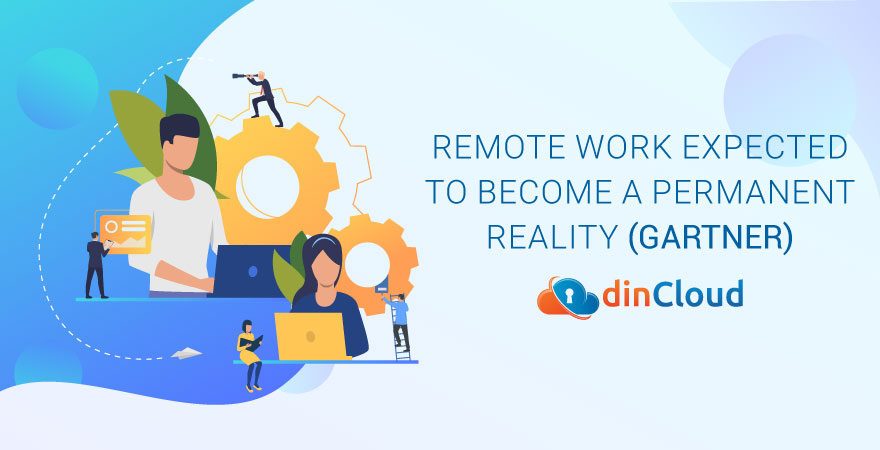By now, millions of businesses worldwide have already wrestled with the new challenge of mass remote work. While this journey may not have been the most pleasant one, the overall outcome has been quite positive and this is a good sign.

Now, organizations globally have started pondering on the post pandemic working scenario. Although it may be premature to arrive at a firm conclusion, some interesting stats have emerged from a recent study conducted by research giant “Gartner”.
Key Takeaways from Gartner Study
Although premature, the study sheds light on how key business decision makers are currently thinking about the future of work.
- Overwhelming 82% of surveyed organizations plan to continue the “work from home”, even after the pandemic.
- Almost 47% of the respondents opined they may allow remote work on a permanent basis, even when this global crisis is over.
- 43% of the surveyed decision makers are planning to allow flexible working days over a week.
- Nearly 42% of participants were also planning flexible working hours for employees.
- A mere 15% organizations were considering a move towards the four day working week, each comprised of 10 hour shifts.
- 61% of managers have increased the number of check-ins on employees, in a bid to ensure productivity and meeting timelines.
Related:
- Cloud Computing Shines Even Amidst Decline in IT Spending
- 2020 Outlook of the Cloud Industry and Top Cloud Players
Post Covid-19 Workforce Scenario
From the above stats, we can easily infer that a major shuffle is expected in the way organizations approach employee productivity in the post pandemic world. One thing seems obvious in the near future though, remote work is here for the long haul.
Emergence of a Hybrid Workforce
Perhaps a notable workforce trend that has emerged out of this entire crisis is a hybrid workforce. In this model, some employees will be recalled to the workplace, while others will continue to work from their homes.
Hybrid Workforce Challenges
The research highlights two vital challenges companies might face once they approach the post pandemic workforce issues.
Related:
Meeting Employee Expectations
While few employees may be looking forward to heading back to their workplaces, majority of them may form a certain expectation that this practice will continue. Let’s not ignore the obvious benefits of working from home over the long term or even permanently.
Perhaps the most important aspects are the psychological and financial costs associated with commuting to the workplace daily. Let’s not ignore the time it takes to reach your workplace and back, especially if it’s located in or around the city’s business hub.
Ensuring Business Resilience and Productivity
So far, organizations have generally been accommodative when it comes to employee productivity. A strong reason behind this approach has been the realization that employees are new to a full blown work from home concept. They need time to adjust themselves.
However, parallel to this realization is the concern around business resilience. Initially, most organizations were more than happy just to establish mission critical operations remotely. With that out of the way now, productivity is again coming to the forefront.
Maintaining Corporate Culture
In a remote work setting of any magnitude, corporate culture is highly likely to take a hit. Perhaps the most important reason is that in a remote work scenario, there are little to no formal mechanisms to attain this particular goal.
A classic example of this challenge is employee dress code. In a partial or full remote work scenario, it would be impossible and even illogical to enforce a formal dress code for employees. There are visual and many other aspects that combine to form a culture.
Seamless Employee User Experience (UX)
This aspect of remote work was also not being given utmost importance before. Now that many aspects of perpetual remote work take shape, organizations will also have to raise the bar when it comes to delivering a good user experience to their employees.
Conclusion
Gartner’s recent report has shed useful light on the outlines of the new “remote work order”. One thing is for sure though, there is a lot that’s still to be done to attain an equilibrium where neither productivity, nor employee user experience is compromised.
Contact dinCloud for your remote work needs in this pandemic and beyond. Our dedicated cloud professionals will guide you along every step.


